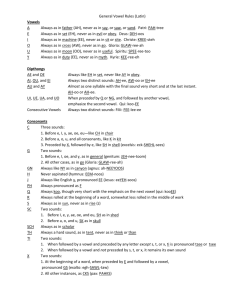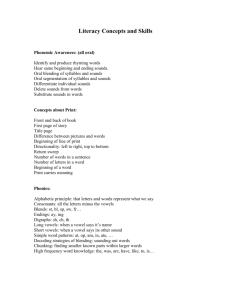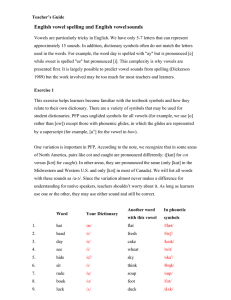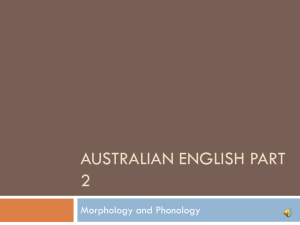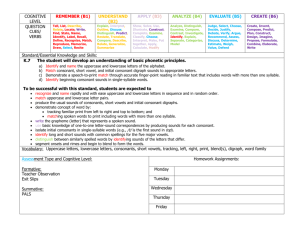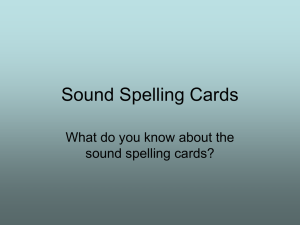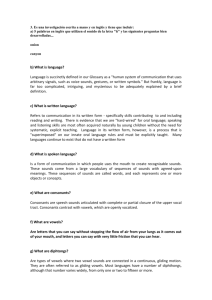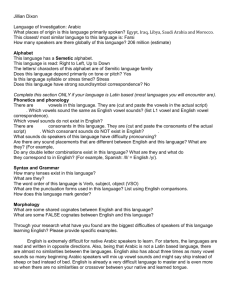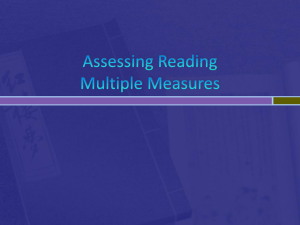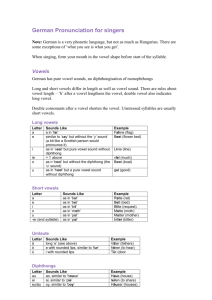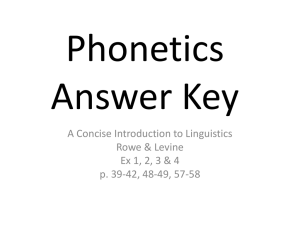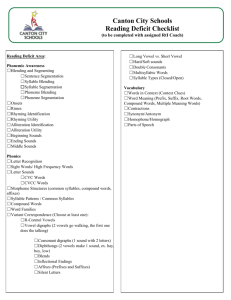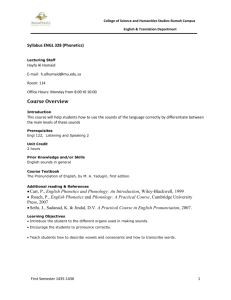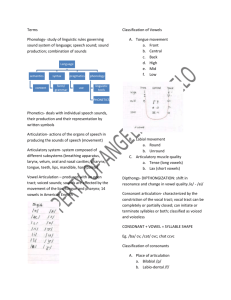Consonants
advertisement
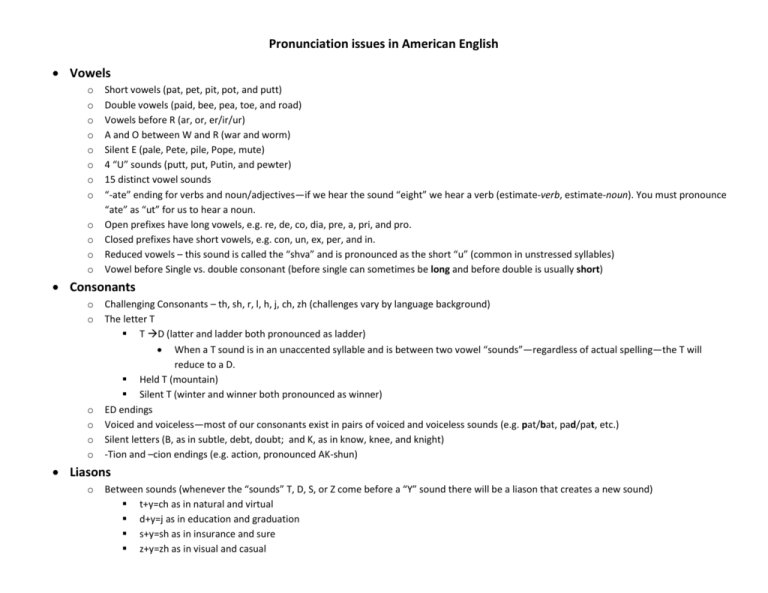
Pronunciation issues in American English Vowels o o o o o o o o o o o o Short vowels (pat, pet, pit, pot, and putt) Double vowels (paid, bee, pea, toe, and road) Vowels before R (ar, or, er/ir/ur) A and O between W and R (war and worm) Silent E (pale, Pete, pile, Pope, mute) 4 “U” sounds (putt, put, Putin, and pewter) 15 distinct vowel sounds “-ate” ending for verbs and noun/adjectives—if we hear the sound “eight” we hear a verb (estimate-verb, estimate-noun). You must pronounce “ate” as “ut” for us to hear a noun. Open prefixes have long vowels, e.g. re, de, co, dia, pre, a, pri, and pro. Closed prefixes have short vowels, e.g. con, un, ex, per, and in. Reduced vowels – this sound is called the “shva” and is pronounced as the short “u” (common in unstressed syllables) Vowel before Single vs. double consonant (before single can sometimes be long and before double is usually short) Consonants o o o o o o Challenging Consonants – th, sh, r, l, h, j, ch, zh (challenges vary by language background) The letter T T D (latter and ladder both pronounced as ladder) When a T sound is in an unaccented syllable and is between two vowel “sounds”—regardless of actual spelling—the T will reduce to a D. Held T (mountain) Silent T (winter and winner both pronounced as winner) ED endings Voiced and voiceless—most of our consonants exist in pairs of voiced and voiceless sounds (e.g. pat/bat, pad/pat, etc.) Silent letters (B, as in subtle, debt, doubt; and K, as in know, knee, and knight) -Tion and –cion endings (e.g. action, pronounced AK-shun) Liasons o Between sounds (whenever the “sounds” T, D, S, or Z come before a “Y” sound there will be a liason that creates a new sound) t+y=ch as in natural and virtual d+y=j as in education and graduation s+y=sh as in insurance and sure z+y=zh as in visual and casual o Between words Final consonants will shift to the next word if the next word begins with a vowel (e.g. “this apple” sounds like “thi sapple"). When the final consonant is the same or very similar to the first consonant of the next word the two will merge and will be pronounced at the beginning of the second word (e.g. “this song” sounds like “thi song”). When one word ends in a vowel and the next word begins with a vowel, a Y or W will be added between the words (e.g. That bee is big” sounds like “that bee yiz big”). Word or syllable stress o o o o o Each word has a single stressed syllable (and a possible secondary stress in some words). The listener may “hear” a different word or phrase if the stress falls in the wrong place. English tends to stress nouns (rather than verbs) Descriptive adjectives attached to nouns are stressed differently than set phrases (e.g. a brown house vs. the White House). Noun/verb stress shift (contract-n, contract-v) Adjective/verb stress shift (separate-adj, separate-v)


